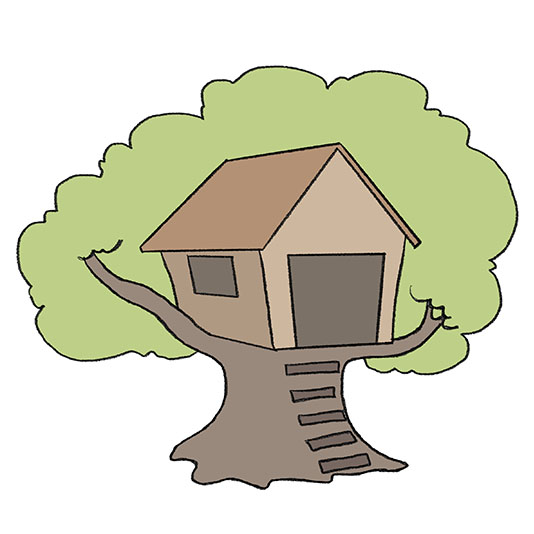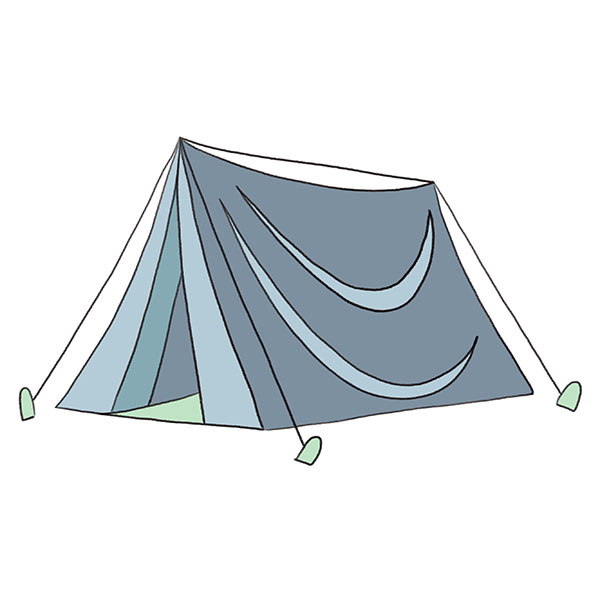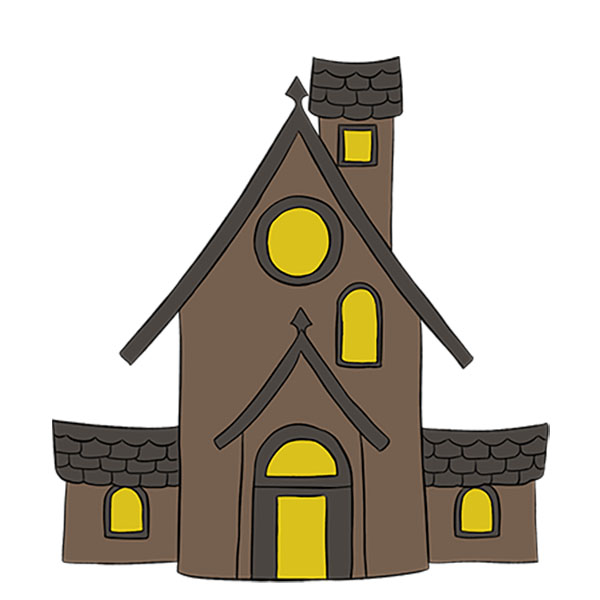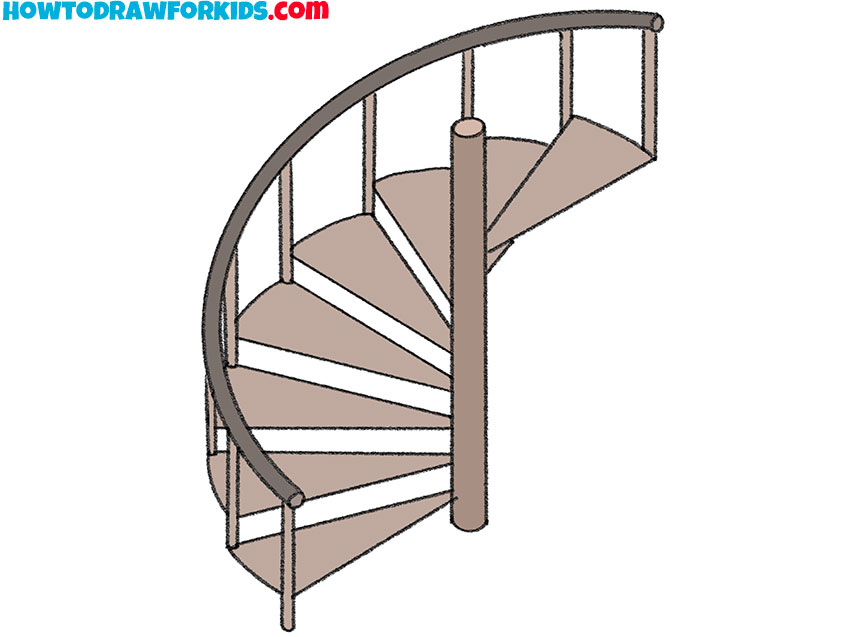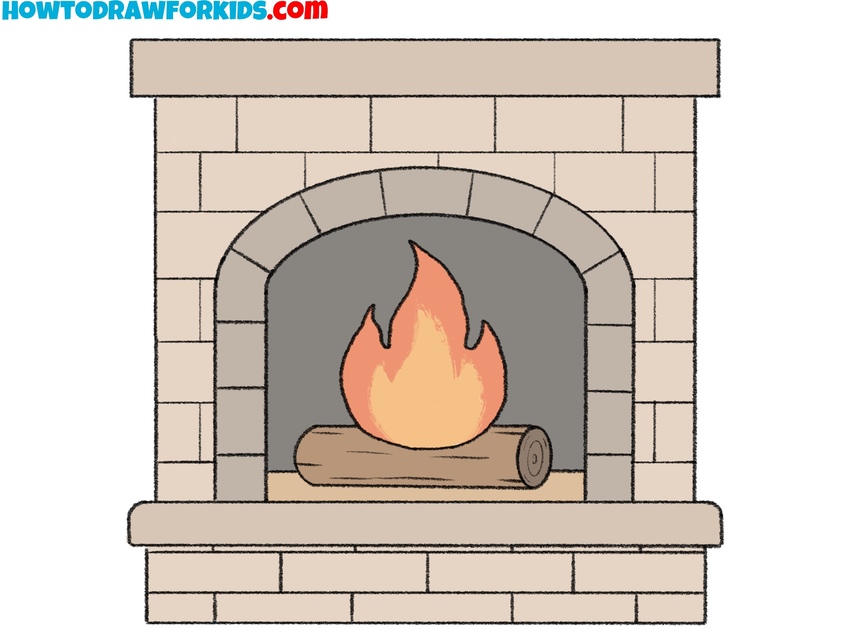How to Draw a Castle
With three engaging methods, you’ll easily learn how to draw a castle with towering turrets and grand walls of your own stronghold!
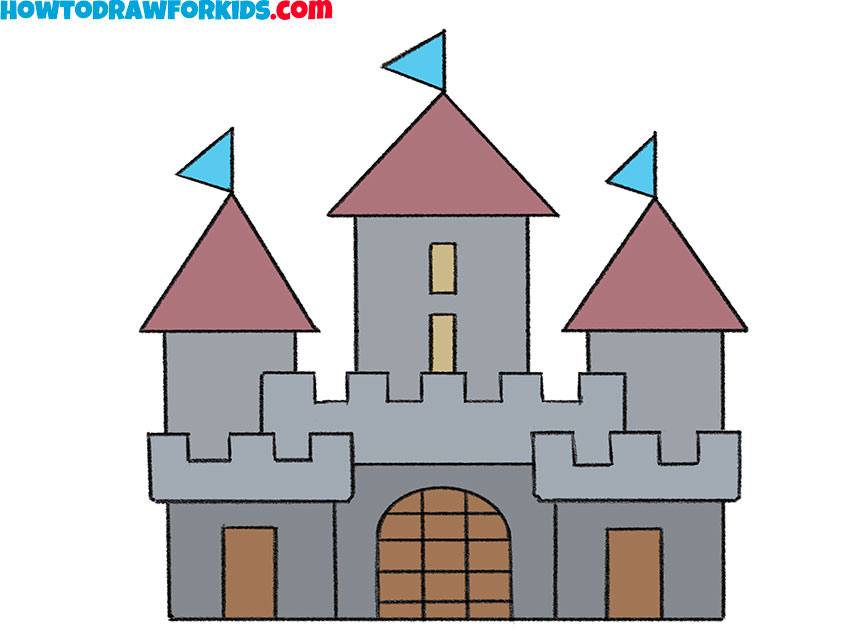
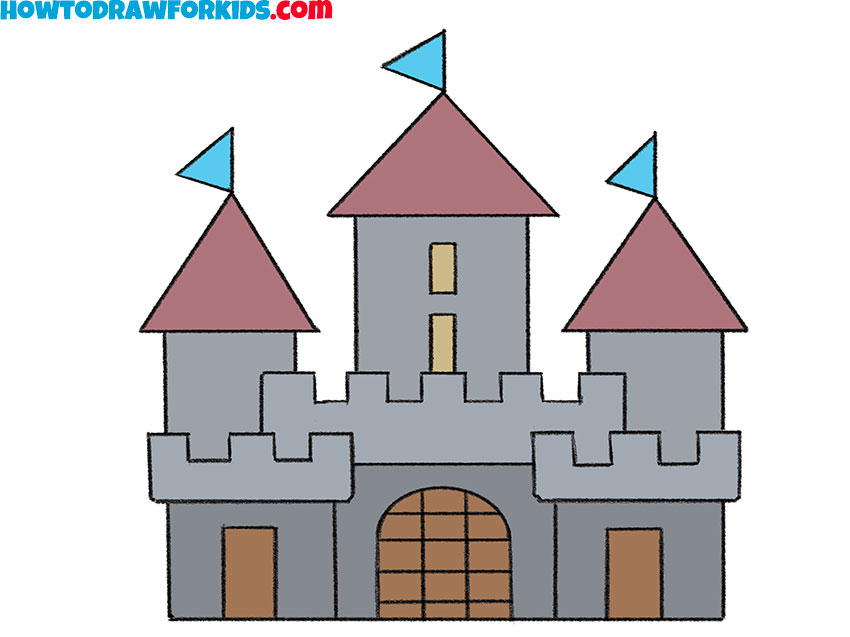
How to Draw a Castle: Introduction
Castles are one of the most essential parts of any fantasy story, fairy tale, as well as many real historical events that took place in our world.
Castles come in many different shapes and architectural styles, but their main components remain the same. They usually include towers, tall walls, narrow windows, gates, triangular roofs, and flags placed above them.
In this lesson on how to draw a castle, all of these elements will be shown in a very simple form that is easy for children to reproduce. Together, we will draw a very recognizable castle that can later be used either as an illustration for real historical stories or as part of any fairy tale, from Harry Potter to legends about King Arthur.
Castle Drawing Tutorial
Materials
- Pencil
- Paper
- Eraser
- Coloring supplies
- Ruler (optional)
Time needed: 30 minutes
How to Draw a Castle
- Sketch the bottom of the castle.
Castles are large and monumental, and to illustrate them you shied illustrate the base by sketching a wide, slightly trapezoid shape. First, draw the very bottom edge of the fortress wall, then mark the lower parts of the side walls with several vertical lines.

- Draw the side battlements.
Now that the base is in place, draw the battlements along the upper edge. Battlements are the classic square notches you see on castles. Use straight, even lines so they look authentic and strong. Mark the guidelines to keep the battlements equal in height.

- Illustrate the central tower.
Next, draw vertical and horizontal lines rising from the top of the wall to outline the central tower. This part, like all the others, does not have to exactly repeat my example. You are free to make your towers higher or lower, wider or narrower.

- Draw more castle towers.
Using straight lines, draw the rear towers behind the ones you drew earlier. They should be slightly narrower than the front ones. You are also free to choose the number and shape of these towers here. Use a ruler if you cannot draw lines directly by hand.

- Add rooftops to the towers.
Now draw triangular roofs on the central tower and the two side towers. This is also a good place to talk about variations: some castles had cone-shaped roofs, others had flat battlements or domes. If you want a fairy-tale look, make the roofs extra tall and pointed. For a medieval fortress, keep them shorter.

- Add windows on the towers and walls.
Sketch rectangular or arched windows on the central tower and the side sections. You can try circular “rose” windows or narrow slits if you draw a military fortress. Some castles had small arrow loops, while others had larger ornate openings for light. You can even add crossbars.

- Draw the main doorway and flags.
At this stage, sketch a large arched entrance in the central section of the castle, then draw small flags on top of each roof. Arches were very common because they gave strength to heavy stone structures. If you want to make your castle drawing look unique, try a rectangular gate with wooden planks or even add a drawbridge.

- Check proportions and symmetry.
Carefully erase the extra construction lines and check that the proportions of the castle look right. For variations, you can also add extra architectural touches: small stones drawn along the walls, brick patterns, or even a surrounding wall.

- Add natural shades to castle parts.
Traditional choices include gray or blue-gray stone for the walls, brown for the wooden door, and red for the flags. A fantasy castle could have golden roofs, pastel walls, or even rainbow banners. Darker tones make it feel like a medieval fortress, while lighter colors illustrate a fairy-tale palace.

Additional Content
I have also prepared a free PDF version of this castle drawing tutorial. This file contains a shortened version of the lesson, which you can save and use offline at any time.
The PDF is convenient for printing or keeping as a reference, so you can practice drawing a castle without needing internet access.
How to Draw a Castle: Alternative Techniques
As I’ve in the very beginning, I have also prepared a few alternative versions of how to draw a castle. These methods use the same basic idea but show the subject in a different style or sequence of steps. These variations can be useful if you want to practice castles in a simpler or slightly different form.
Easy Castle Drawing Tutorial
The first variation worth practicing is this easy castle drawing tutorial, which shows how to depict a basic fortress with simple straight lines. In this tutorial you can see fewer towers and the structure itself is noticeably simpler overall.
This basic castle requires basic shapes, so sketch the lower part of the fortress as a wide rectangular shape. Add battlements on top using short, alternating vertical and horizontal lines. Extend a narrow tower upward in the middle.
Sketch the main doorway as a tall arched shape, and use light guiding lines to place smaller windows above and along the sides. Add more arched windows and a flag on the central roof. Divide the door into vertical panels. Trace the whole castle drawing carefully, correcting any uneven lines. Color the castle, keeping the walls in a dark tone and painting the roof and windows using lighter colors.

Drawing a Simple Castle with Minimal Details
A further variation is this simple castle drawing tutorial, which is even more reduced in detail and construction compared to the other versions. The drawing shows a central tower with a triangular roof, flanked by two square side towers. Windows are shown as small repeated arches, and the doorway is a tall arch in the middle of the wall.
This version uses even more simplified techniques, but the sequence is similar, so sketch the lower wall as a wide U-shaped structure and attach two square towers on each side. Place a narrower central tower in the middle and extend it higher than the side sections. Add a triangular roof on top of this main tower. Form the battlements along the top of the side towers and connecting wall using short rectangular cuts.
Indicate small arched windows in each section of the castle, repeating the shape. Insert a large arched doorway in the center and outline the door panels with vertical divisions if needed. Trace over the drawing carefully to finalize the outlines, erasing unnecessary construction lines. Shade the castle, keeping the walls in one tone and the windows a lighter shade.

Conclusion
With these step-by-step guides, you’ve drawn a complete castle, that looks very simple but authentic. Practicing how to draw a castle is also a good way to think about basic architecture, proportions, and symmetry in your drawing.
If you want to continue with similar subjects, I’d suggest trying my tutorial on how to draw a house for simpler work, or moving on my knight drawing tutorial if you want to add simple people to the foreground. For something more imaginative, you can visit my dragon drawing tutorial or other guides from my Fantasy category.

